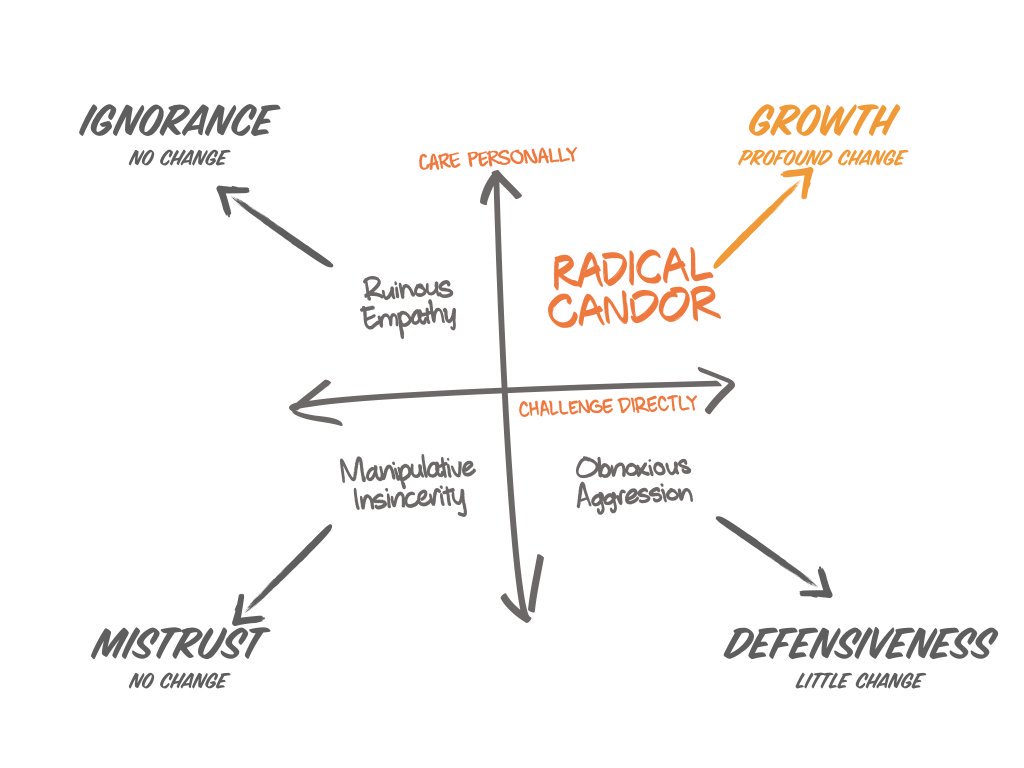For our clients, finding the right words can be difficult. Especially in times of high-stress or while working in a fast-paced environment. This is why we are constantly receiving emails and phone calls about how to properly deliver feedback in the workplace.
Delivering efficient feedback that streamlines improvements can be challenging. The reason for this is because feedback can often be taken as criticism or an attack on a team member’s ability to do their job effectively. As a leader, you don’t want to make any team members feel unappreciated or inadequate. This only creates tension in the air, injuring the bond and the trust of the entire team. It can also halt communication and blur the transparency of emotions and opinions. Basically, one wrong word and your team could sink.
However, we all know that sometimes there are things that need to be said and addressed in order to progress as a team and as a company. And, it’s important not to ignore those things for fear of stirring the pot. As a result of staying quiet, issues will deepen, and frustration will bubble up when the words finally come out. You’ll receive questions such as, “Why didn’t you say something sooner?”
As a leader, it is your job to say something, even when it’s hard. But, how do you do that and make it work for the advantage of the team and all of its members?
Well, to be honest, there are quite a few ways you can effectively deliver feedback. Thought leaders have designed feedback formulas made to suit any type of team dynamic. We are here to share with you some of our favorite formulas so that you can find the one that works for you and your team.
Radical Candor

Image Credit: Commoncog
Radical Candor challenges our two mindsets in life when delivering feedback in the workplace. The first is to leave our compassion, our heart, and our humanity at home — we are here to do business. The second is that if you don’t have anything nice to say, don’t say it at all. Radical Candor takes these two opposites and combines them into an extremely effective communication technique.
Radical Candor is about challenging the issue directly while showing that you care and sympathize with the team member you are speaking with. In other words, you are being straightforward while also being kind.
To make it easy to remember, use the acronym HIP:
H – Humble & Helpful
I – Immediate & In-Person
P – Public Praise & Private Criticism
Now, let’s break down each piece and how to put it into practice with your team.
Starting with H, it’s easy to understand the need to be humble when bringing up an issue with an employee. Although you are the leader in the dynamic, it’s important to remember that you are also human and make your fair share of mistakes. Do not approach your team member in an elitist fashion, but rather with a kind heart and clear mind. When providing feedback make sure that it is actually useful to them. The whole point of giving feedback is to improve the team, so make sure you’re being helpful by stating your intention to help, being clear with your explanation, and showing not telling.
Next is I. Providing immediate feedback is essential for stopping a problem at its root. If you sense an issue, it’s always best to catch it early before it spreads throughout the team or hurts the workflow. Feedback should also be provided in-person rather than over email, text, or phone. Miscommunications often occur through the use of technology because of the misjudgment of tone and intention. As leaders, when we provide feedback over one of these mediums, we cannot gauge the reactions (body language) of our employees, and in turn, we have no idea if they are understanding what we are saying and if they don’t understand then we are just wasting our energy.
Lastly, there is P. P stands for public praise and private criticism. In an office setting, public praise can help set a positive tone for the entire team. It will help other team members learn what is expected of them. To really set the standard and help the team learn something new, be detailed about the praise with a clear explanation of what happened and how it helped the company. Although we would like our team to know what not to do, it is never a good idea to criticize a team member’s actions in public. Criticism should always be done in private. It is more effective for the team member that is being criticized too. They will be more open to accepting accountability in private and making the necessary changes moving forward. If they were in public their automatic defense mechanisms may blur the solution being handed to them.
SBI
SBI is an acronym which stands for Situation Behavior Impact. This method of providing feedback focuses on the details in order to produce effective results. This technique of providing feedback is easy-to-follow and can be accomplished in three simple steps:
- Situation – When delivering feedback, you must outline the situation you are referring to, providing details so that it is completely clear to the team member you are speaking with.
- Behavior – Then, you must be specific about the behavior you are addressing. Again, be very specific. Do not make assumptions about a person’s behavior and never go on someone else’s word. The behavior you are addressing should be observed directly by you.
- Impact – To sum up your feedback, carefully explain how the behavior in the situation is affecting, you as a leader, the team, and the company as a whole.
The reason this method is effective is that it clearly states the problem and provides a direct call-to-action to address it. Many leaders are tentative to provide such straightforward feedback to their employees, however, employees actually want that negative feedback so that they can use it to improve.
FeedForward
Oftentimes, when we provide feedback to our teams, we end up focusing on the past. But, it’s hard not to when we are addressing issues that have already occurred. However, the idea of FeedForward ignores the past by adding suggestions to better improve in the future. The FeedForward approach can be done in three simple steps, much like the SBI method:
- Tell Them What You Like – First, it’s important to start the conversation on a positive note by letting your team member know there are things that they’re doing that you really like. Positive reinforcement is critical to making your team feel appreciated and valued.
- Teach, Don’t Criticize – As a leader, you are working as a teacher and a coach, as well. Teachers and coaches push to improve team members through motivation and encouragement. Leaders should do the same by ignoring the past and pushing their employees to do better through positive encouragement.
- Suggest Ideas For the Future – At the end of the FeedForward you are providing to your team member, it’s important to suggest improvements for the future in a motivating, respectful, and positive way.
FeedForward is an effective method because it frames everything positively with motivation as its core. Team members like to be pumped-up, encouraged, and given motivation. This helps to essentially “light their fire” when it comes to their passion for their job. The Feedforward method also allows team members to internalize the feedback they are given rather than putting up an emotional wall because of a negative tone from their leader.
Compassionate Directness Model
The founder and CEO of Thrive Global, Arianna Huffington, believes in the Compassionate Directness Model of feedback. This model focuses on the idea of constructive criticism through a compassionate tone. It is much like Radical Candor, where you are being direct but also being kind.
The Compassionate Directness Model can be followed in five steps:
- Think Before You Speak – It’s important when bringing up an issue to an employee to have an objective in mind. Not only will it keep you on track and help you not to stumble over your words or lose your train of thought, but it will also help the message remain clear to the person you are discussing with.
- Let Them Know Why They’re There – When an employee gets called into an impromptu meeting, their first question is, “why am I here?” If you don’t answer that question immediately, they will be distracted thinking about that while you are trying to get your point across, so do yourself a favor and answer it quickly and briefly when they first get to your office so that they can fully internalize your criticism.
- Hit All Your Points – Start with your big points and then let the conversation flow naturally from there. You want this to be a discussion between two colleagues, rather than a lecture.
- Provide Solutions – Providing solutions for the issue at hand takes some of the weight off of the employee’s shoulder. It also shows them you care and that you are there to help them, not just criticize their performance.
- Ask For Feedback – After you have settled on solutions for the future, ask your employee for feedback and suggestions, as well. Ask, “how can I help next time?” This puts you on the same level as the employee and will allow them to feel the mutual respect you should be aiming for as a leader.
When following through with these five steps, it’s important to always speak with respect and compassion. You never want to accuse, assume, or come off too harsh as that could make your employee feel underappreciated and undervalued. Remaining compassionate while still getting your point across will motivate your team member to make improvements in the future.
FAQ:
- Why Is Feedback Important?
Feedback is important to any workplace environment because it helps to eliminate issues and make improvements going forward.
- Why Can Feedback Be A Challenge?
Feedback can be challenging because confrontation is difficult. Oftentimes, emotions get in the way of giving and internalizing feedback.
- What Is Radical Candor?
Radical Candor is a feedback technique that focuses on being straightforward while remaining kind.
- What Is SBI?
SBI stands for Situation Behavior Impact. It is a feedback method that focuses on straightforward details in order to get effective results.
- What Is FeedForward?
Feedforward is a feedback method which ignores the past and focuses on the future. It is done with a positive tone that works to motivate and encourage employees.
- What Is the Compassionate Directness Model?
The Compassionate Directness Model uses compassion and respect as a gateway for criticism.
